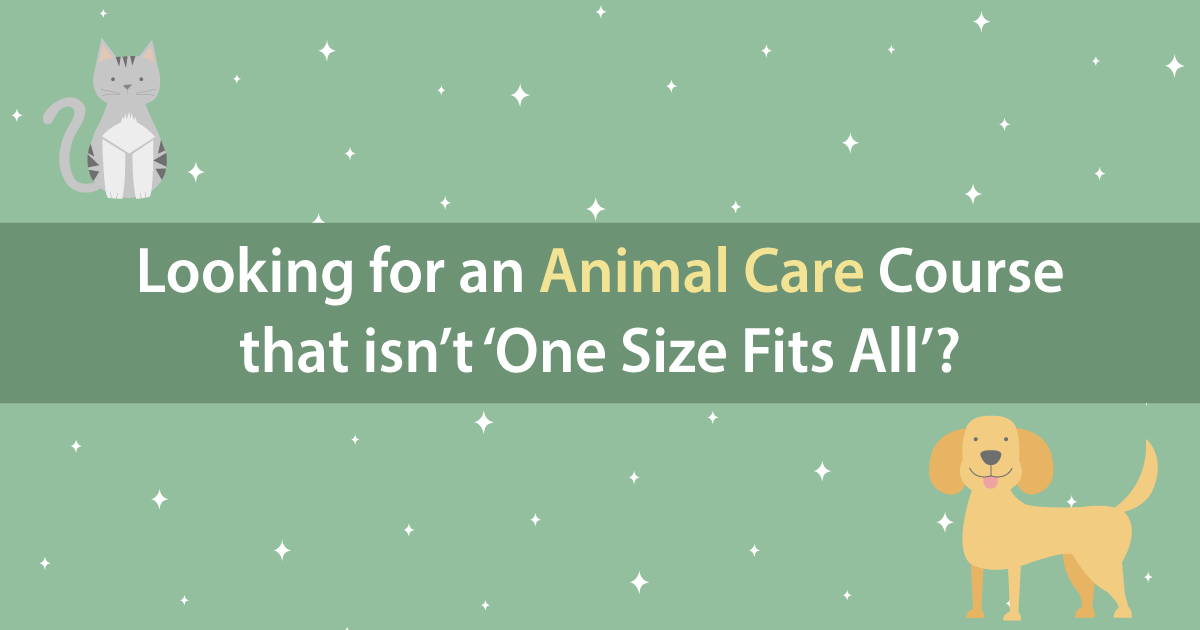You can tailor your learning so that it’s relevant to your job role and interests when studying the Level 2 Animal Care and Welfare Assistant Apprenticeship. In the further learning section of the course, you can choose from one of seven pathways, steering your learning in the direction of your career.
Pathways
As well as the essential knowledge, skills and behaviours needed to progress in the animal care industry, you’ll choose one further learning pathway. The seven pathways you have to choose from can be seen below:
Animal Interaction and Handling
You might choose this pathway if you work as a:
- Dog Day Care Assistant
- Animal Welfare Assistant
- Farm Park Assistant
Within your job you’ll regularly interact with and handle animals, meaning it’s essential you’re using the right methods. This extra learning section is based around interaction and handling activities so you can make sure the animal’s welfare is always put first.
Rehoming
The rehoming pathway is well suited to those working as:
- Animal Welfare Assistants
- Zoo Keeper Assistants
The pathway is also a good choice for those working in animal rescue or dog rehoming centres.
Matching an animal with their forever home is a rewarding job. This extra learning section focuses on the intake, assessment, matching and rehoming of animals, to make sure when you assist with the rehoming process, animals are matched with the right family for them.
Movement and Transportation
This pathway is aimed at those working as:
- Animal Collection Officers
- Animal Ambulance Drivers
- Wildlife Rehabilitation Assistants
Transporting animals, especially those needing veterinary attention, can be difficult. The movement and Transportation pathway looks at legal requirements and how you can ensure the animal’s welfare is maintained at all times.
Breeding
Typically you would choose this pathway if you work as a:
- Animal Welfare Assistant in a breeding centre
While breeding animals can be rewarding, there are many factors that you’ll need to consider to ensure the welfare of the mother and her babies. The breeding pathway focuses on the entire breeding process; from mating and parturition, to caring for neonates and the physical and social development of the young.
Working Dog Handler
Those undertaking this pathway would be working in roles such as:
- Animal Handler
- Security Dog Handler (e.g. army dog handler or police dog handler)
- Service Dog Handler (e.g. guide dog handler)
Dogs play vital roles in several industries, doing jobs humans don’t have the ability to. The extra learning you’ll look at in this pathway is based around ensuring the dog team operates within the relevant legal and ethical frameworks.
Operational/Reception Duties
If you work in one of the following roles, this pathway is the right choice for you:
- Pet Shop Assistant
- Kennel/Cattery Assistant
- Animal Day Care Assistant
When working in an animal care environment, it’s likely there will be times you’ll need to help out with operational and reception duties. This extra learning section focuses on customer service, processing of sales, management of stock and record keeping.
Wildlife Rehabilitation
Those choosing this pathway would typically work in roles such as:
- Wildlife Rehabilitation Assistant
- Zoo Keeper Assistant
- Farm Park Assistant
Working in wildlife rehabilitation means you’ll regularly be dealing with wild animals, so it’s important you know the correct way to approach these situations. The extra learning you’ll explore in this pathway is based on the collection, movement, care, release and monitoring of health and casualty wild animals.
Discover what else you’d cover on the course.


 With there being such a wide variety of careers in animal care, it can be hard to find a qualification that suits both you, and your job role.
With there being such a wide variety of careers in animal care, it can be hard to find a qualification that suits both you, and your job role.